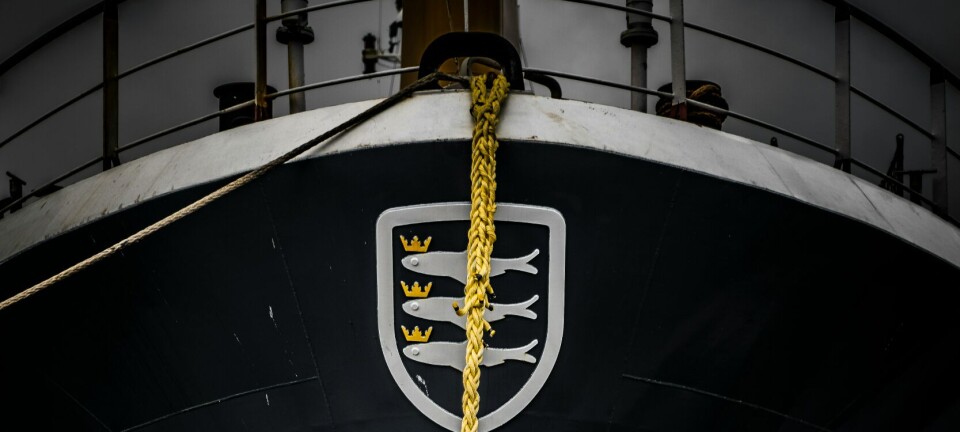Dire Straits: why the world’s maritime choke points are under pressure

Dire Straits: why the world’s maritime choke points are under pressure
Last month, we all saw just how vulnerable maritime routes are, when one of the world’s largest container ships, the Ever Given, blocked the Suez Canal for six days. The accident threw global supply chains and shipping schedules into disarray, and the financial and legal ripples the incident caused will take months or possibly years to subside.
In one fell swoop, high winds blocked one of the most important shipping routes in the world. The sight of the stricken Ever Given launched a thousand memes on the internet, but the blockage of the strategic waterway was no laughing matter — the Suez Canal carries 12% of global trade by volume and the alternative route round the Cape of God Hope adds more than a week to a ship’s voyage.
The Suez Canal is just one of several maritime choke points and they are all under increased pressure and more vulnerable than ever to disruption, either from accidents, war or sabotage, or from natural disasters and climate change.
The Panama Canal, the Singapore Strait, the Turkish Straits, the Danish Straits, the Cape of Good Hope, the Bab El-Mandeb, the Malacca Strait, and the Strait of Hormuz — they are all key to the smooth functioning of the global economy, and they all have their vulnerabilities.
Volume has increased year-on-year
One reason for increased pressure on these key routes is that year-on-year, maritime trade has been growing. In 2010, 8.4bn tonnes of cargo travelled by sea. By 2019 this had grown to 11.1bn tonnes. According to think-tank Chatham House, 42% of world grain exports passed through at least one of these choke-points in 2000. By 2015 that figure had risen to 55%, and the volume is rising.
To meet growing demand, some waterways have increased their capacity. The 2015 expansion of the Suez Canal added 35km of new channels and dredged existing ones, allowing bigger vessels to transit. In 2016, the Panama Canal was expanded, making it wide and deep enough for 79% of cargo ships to transit.
An option for global trade is pipelines and for commodities such as oil, these are viable alternatives. The SUMED pipeline, for example, carries oil between the Mediterranean and the Red Sea, and Russia’s soon to be completed NordStream 2 pipeline will supply Europe with Russian gas. But too much reliance on a single source has in-built dangers and pipelines are susceptible to damage and sabotage.
Climate change
Climate change means the Northern Sea Route is becoming an alternative route for passages between Asia and Europe, and Russia particularly is keen to exploit it, even though it is navigable for only three to four months a year and has unpredictable ice conditions. Although climate change may make the route practical year-round, changing weather patterns threaten other choke points.
Extreme dry weather events will become more common and a dry spell in 2016 forced the Panama Canal Company to implement depth restrictions, preventing some deep-draft vessels from transiting.
And paradoxically, rising sea levels may affect the viability of ports around the world and the impact of population displacement from coastal areas will have ramifications for everyone and every facet of human endeavour, the shipping industry included.
Other threats
Maritime choke-points face direct human threats too. Political instability and conflict are other reasons key routes might need to be avoided. Yemen’s civil war continues to impact approaches to the Suez Canal, for example, and Houthi rebels have launched numerous attacks on Saudi shipping in recent years.
Yemen’s coast is on the narrow Bab El-Mandeb strait and 10% of the world’s petroleum products pass through it, making it a vital waterway for the petroleum industry and the oil which is essential for virtually everything we consume.
It would not take too much imagination or too much in the way of resources to shut down a major waterway like the Panama Canal or Suez Canal. Sabotage and terrorist attack are always a possibility and could cause lasting disruption, far in excess of the short hiatus in trade caused by the grounding of the Ever Given.
We ply uncharted waters
And then of course we come to the global pandemic. With lockdowns worldwide, those with the cash to splash have been buying more material goods, and shipping volumes have soared on the back of an online shopping bonanza. More goods, more volume, more ships, more congestion, but the route options available to ships remain the same: few, key, and essential fragile.
We are in uncharted waters. We face a pandemic that threatens to rumble on for months and years to come; we face climate change and the degradation of the ecosystems we depend on; we’re seeing geopolitical fault lines opening up around the world, and we’re witnessing a desperate scramble for resources to fuel the forges of global free trade, and yet, we have come to see, now more than ever, just how interdependent we all are.
The grounding of one massive ship was just a small indication of just how vulnerable the system is and how vital it is for governments and organisations to build resilience into everything they do. Global supply chains are inherently fragile and we all need to learn to be less reliant on them — in a time of breath taking change, resilience is crucial.










